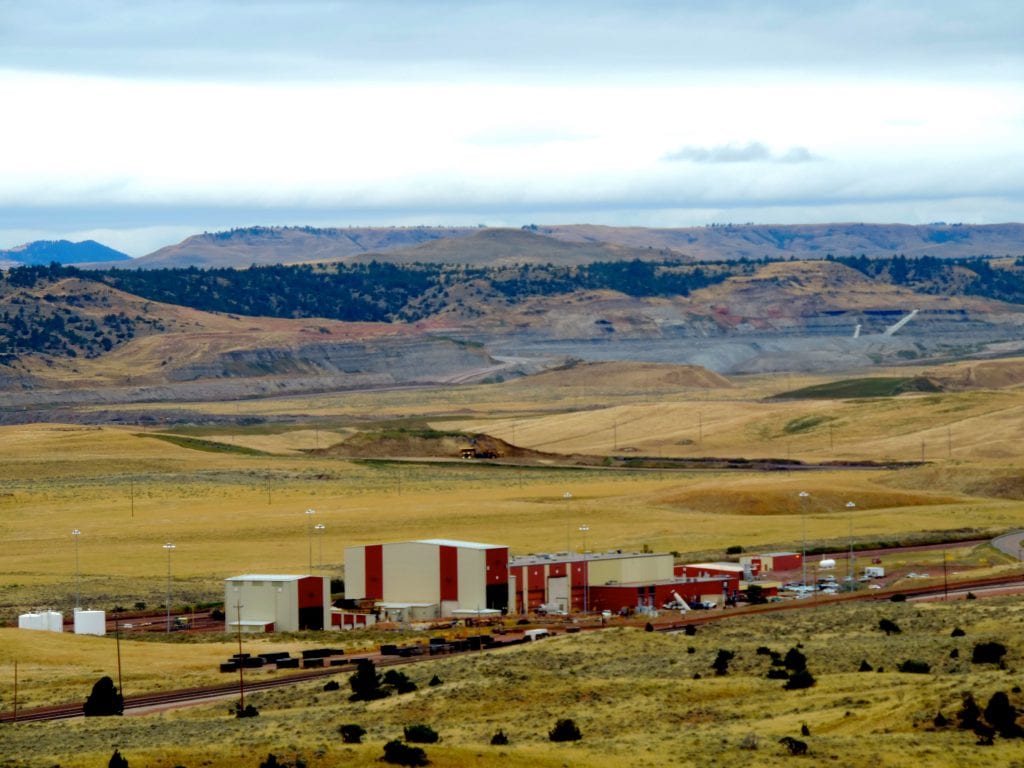
Methane venting above West Elk coal mine in western Colorado.
Earlier this month, WildEarth Guardians filed opening briefs in lawsuits challenging coal mine expansions in Colorado and Montana, setting the stage for defending our public lands, climate, and clean energy future.
West Elk Coal Mine Lawsuit
The first brief was filed in our suit over the West Elk coal mine in western Colorado. At the end of 2017, the Trump Administration approved a 1,700 acre expansion of the mine, allowing Arch Coal to undermine pristine roadless National Forest lands next to the West Elk Wilderness Area (check out for yourself these pristine roadless lands).
All told, Arch was handed over more than 17 million tons of coal, much of it publicly owned, increasing the reserves to 71.1 million tons of coal and extending the life of the mine by nearly three years. When burned, this coal stands to release more than 183 million metric tons of carbon dioxide equivalent.
That’s equal to the amount of carbon released by 45 coal-fired power plants in a single year.
What’s worse, to mine the coal, Arch has to drill dozens of wells above the mine and vent massive amounts of methane. In fact, the West Elk mine is Colorado’s largest single source of methane emissions. This methane venting has turned the public lands above the West Elk mine into a literal natural gas field.
And because methane has more than 86 times more heat trapping capability than carbon dioxide, it means the West Elk mine is an especially dirty mine and its expansion is especially troublesome for the climate.
At the end of 2017, we filed suit in federal court to block the mine expansion. Represented by Earthjustice and together with our co-plaintiffs High Country Conservation Advocates, Center for Biological Diversity, Wilderness Workshop, and the Sierra Club, we initially moved for an injunction to keep Arch Coal from bulldozing roads into the National Forest.
Unfortunately, we lost this reprieve, but the lawsuit has continued and is being expeditiously briefed. At the end of March, we filed what’s called our “opening brief,” which basically lays out all our arguments for why the West Elk expansion is illegal.
There’s still time to stop the expansion of the West Elk mine, protect our public lands, and save the climate. We’re doing everything we can to ensure the Trump Administration is held accountable to the law and our future generations. We hope for a ruling in this case by the end of 2018.
Spring Creek Mine Lawsuit
In early April, we also filed an opening brief in our lawsuit challenging an expansion of the Spring Creek coal mine in southeastern Montana.
The Spring Creek is actually the largest coal mine in Montana. It’s a part of the Powder River Basin coal producing region, which is the largest coal mining region in the United States and a root contributor to global warming.
In 2017, the massive strip mine produced more than 12.7 million tons of coal and fueled six coal-fired power plants throughout the country.
What’s worse, however, is that the mine’s owner, Cloud Peak Energy, exports an increasing amount of Spring Creek coal to Asia via ports in the Pacific Northwest. In 2017, 4.2 million tons were shipped overseas, nearly 1/3 of the mine’s total production. In 2018, the company expects to ship 5.5 million tons of coal overseas.
WildEarth Guardians previously won a federal lawsuit challenging the expansion of Spring Creek. Unfortunately, in response, federal mine regulators came back and rubberstamped a new mine approval.
All told, the new expansion opened the door for strip mining more than 1,000 acres and for the extraction of more than 84 million tons of coal. An analysis prepared by federal mine regulators estimated the new mining would fuel more than 30 million metric tons of carbon dioxide annually for more than five years.
Last June, we filed suit in federal court to block this latest mine expansion. Represented by our own staff attorneys and by the Western Environmental Law Center, we joined co-plaintiff Montana Environmental Information Center in pushing back against this latest plan to hand over our public lands and our climate to the coal industry.
Earlier in the month, we filed our opening brief laying out our legal case against the latest Spring Creek mine expansion. We hope to set the stage for a ruling in late 2018.
Keeping it in the Ground
Although the Trump Administration is trying to go to the mat for the coal industry, the reality is, the headwinds facing coal are tremendous. The plummeting costs of renewable energy, the rising costs of mining and transportation, and other factors are simply too much to overcome.
Even under Trump, the coal industry is flailing.
For our part, we’re continuing to keep the pressure on the federal government and to hold them accountable to defending our climate, whether they like it or not. If we can’t start to keep our coal in the ground, we have no chance of effectively reducing greenhouse gas emissions and keeping global warming in check.
We’re continuing to hold the line to defend our climate and public lands from coal. In Colorado, Montana, and other western states, we’re launching and sustaining critical defense tactics. With our tenacious legal work, we have a fighting chance of protecting our future generations.

